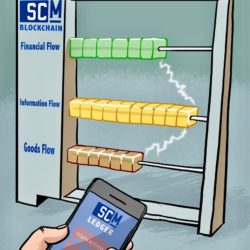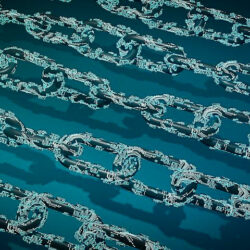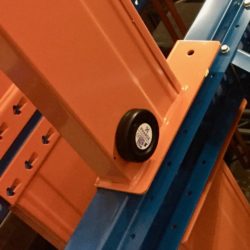The promise of blockchain

Blockchain holds great promise. It is predicted to result in faster, more transparent and more efficient supply chains that are possibly fairer and more sustainable too, so it’s not surprising that everyone is talking about blockchain. But the technology is still in the early stages of development and there are many challenges to overcome. What is the best way for companies to get started with blockchain?
By Marcel te Lindert
The bill of lading is a crucial document for ocean freight. The document is a contract of carriage with which the carrier accepts liability for transporting the container to the agreed destination on the shipper’s behalf. The same bill of lading serves as proof of ownership for the recipient of the goods, providing they can produce the document.
Despite various attempts to digitalize the bill of lading, the hard-copy version continues to play an important role in many cases. It is not unusual for cargo to arrive at the port of Rotterdam, but not to be released until the recipient has received the bill of lading by post or courier. Blockchain holds the promise to change all this. A separate paper trail is no longer necessary because all transactions are registered safely and reliably in a blockchain.
Synchronizing flows
CargoLedger is one of several start-ups that are using blockchain technology to make it faster, easier and more efficient to transport goods internationally. “Besides a flow of goods, there is also a flow of information and a financial flow. Blockchain makes it possible to synchronize those three flows, resulting in more transparency, more trust and fewer risks”, says Hjalmar van der Schaaf, co-founder of CargoLedger. “Paper is still a key data medium right now, but that means the information has to be entered and checked manually, which leads to mistakes and delays in the supply chain.”
CargoLedger builds blockchain-based applications. Van der Schaaf distinguishes between three main types of uses: proof of origin, proof of delivery and payment on delivery. Thanks to the use of blockchain, the origin of goods can be determined irrefutably. When the same blockchain subsequently generates an automated proof of delivery, that can automatically initiate the payment process too. “Currently, everyone enters all the data in their own systems, which barely communicate with one another – if at all. Putting all that data into a blockchain instead means that the data is available directly from the source for everyone involved. In the case of the paper version of the CMR document, for example, it can often take a couple of days before the driver comes back into the office to hand it in. Digitalizing that process means that the document can be submitted immediately and processed in real time so that the payment process can get under way.”
Van der Schaaf has noticed that a lot of companies are interested in blockchain: “A number of our applications are already operational and we’re working on various proof of concepts and pilots too. In view of these and other market initiatives, I expect that we’ll be seeing lots of interesting uses emerging this year. Blockchain holds great promise.”










